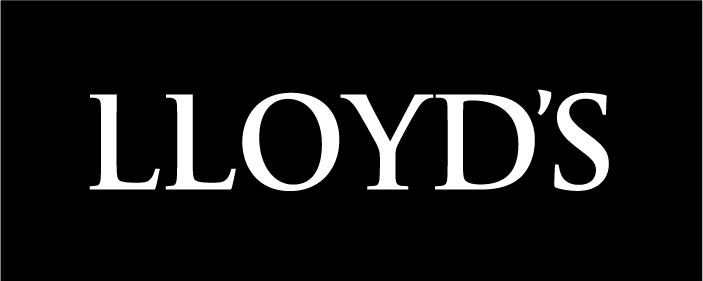Forecasts & Results
Lloyd’s full year results for 2022
Posted 27/03/2023 – Quick takes

Headline results:
- 2022 gross written premiums (GWP) increased by +19% to £46.7bn (FY21: £39.2bn). This increase in premiums reflects an +8% growth in rate, a +4% increase in volume and +7% from FX (primarily the strength of the US dollar).
- The +8% rise in rate marked 20 consecutive quarters of positive price change for the Lloyd’s market.
- Lloyd’s delivered a combined ratio (CoR) of 91.9% for the 2022 financial year (FY21: 93.5%), its best result since 2015.

Source: Lloyd's
- John Neal, CEO, said that the improvement in the underwriting performance reflected 5 years of “remediation and hard work” and was delivered despite an elevated major loss ratio of 12.7% (FY21: 11.2%). These major losses were dominated by losses from the conflict in Ukraine of £1.4bn (an increase of +£0.3bn since 1H22 of which 90% remains IBNR) and from Hurricane Ian of c£2.0bn.

Source: Lloyd's
- The reported underwriting profit was £2.6bn (FY21: £1.7bn).
- The market’s attritional loss ratio improved to 48.4% (FY21: 48.9%).
- The combined ratios of the property and casualty reinsurance classes improved, but the CoR of specialty reinsurance deteriorated due to the impact of Ukraine on marine reinsurance (war on land within composite programmes).

Source: Lloyd's
- The combined ratios of the insurance classes all improved save for Marine, Aviation & Transport, which was particularly impacted by Ukraine within marine war (where businesses are holding reserves for potential losses in the Black Sea).

Source: Lloyd's
- The expense ratio improved to 34.4% (FY21: 35.5%). The focus on the expense ratio will continue in FY23, with Burkhard Keese, CFO, highlighting that the ratio was 110bps better than 2021 and 480bps better than 2018 (albeit aided somewhat by the strength in the US dollar). The target for FY25 is for an expense ratio of 31.5%.
- Prior year reserve releases rose to 3.6% (FY21: 2.1%). There were releases across most classes save for a 2% average increase in casualty reserves due to economic and social inflationary pressures.
- 2022 recorded an investment loss of £(3.1)bn. This, in turn, drove a full year loss before tax of £(0.8)bn (FY21: profit of £2.3bn). The investment losses are due to mark-to-market unrealised investment returns and should unwind over the next two to three years, as the assets mature.
- Despite the volatility in bond markets, Lloyd’s announced an “exceptionally strong capital position”, including a central solvency coverage ratio of 412% and market wide solvency coverage ratio of 181%.
- Neal said that the focus on sustainable performance and underwriting discipline will continue throughout 2023 and beyond “and we make no apology for that”. He also stressed the need for “appropriate and adequate pricing” given the current inflationary environment.
- As announced during the 1Q23 market message, 2023 will see a particular attention upon Cyber, D&O and delegated business.
2023 Outlook
- Neal stressed that the world is an uncertain and volatile place, but this provides Lloyd’s with opportunities. He stressed that there was “more to do and more to deliver”.
- Lloyd’s expects GWP to grow by c£10bn in 2023 to c£56bn, supported by the capital strength of the market. +14% growth in GWP is expected to include +4% from rate, +6% from inflation and +4% from volume.
- The market is also expected to deliver a CoR of <95% (given a normal catastrophe year).

Source: Lloyd's
Given current running yields and what Keese described as a “very conservative investment portfolio”, Lloyd’s expects to deliver an investment performance of >3% on c£96bn of assets, which will boost the overall market return. Keese said that FY23 should therefore deliver a c60% higher investment income (c£2.7bn) than FY22 (c£1.7bn).

Source: Lloyd's
- Credit risk exposure to banks is £4.6bn but well diversified across regions and institutions. There is only a “small exposure” to US regional banks and AT1 instruments within the portfolio and Keese sees balance sheet management “as important as underwriting management”.
- The market’s reserve margin of £3.5bn (or c7% of reserves) is a +£0.5bn increase vs. FY21 and a +£0.8bn increase vs. FY20. Keese said that this will provide scope for further prior year releases.
Alpha comment
- These headline results are clearly positive news for both the market and Alpha’s members and reflect the hard work undertaken by the performance management directorate over the past several years to remediate underperforming books of business.
- Of all the headline numbers, only the major claims percentage has deteriorated – a result of both a land war in Europe and one of the costliest hurricanes of all time.
- Given the current rating environment, in particular the recent hardening in the property treaty and retrocession markets, we continue to believe that now is an excellent time to be underwriting at Lloyd’s.
- The 2023 combined ratio target of <95% is, we believe, very conservative and the performance of Lloyd’s in FY23 should comfortably rival FY22, if the improvements in the expense ratio and investment returns are delivered – particularly if FY23 is a more ‘normal’ year for major losses.
